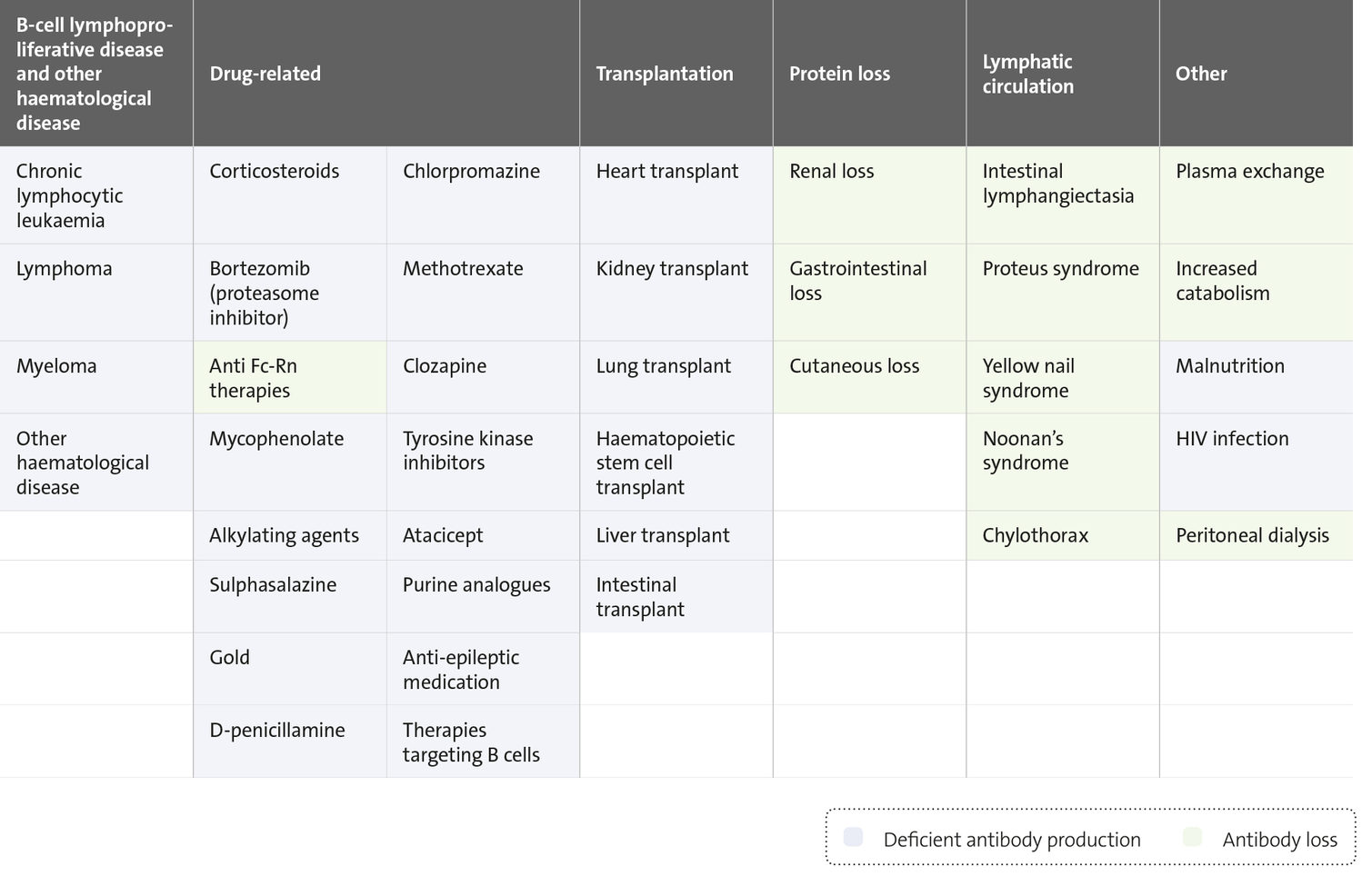Hypogammaglobulinemia is a decrease in serum immunoglobulin G (lgG) level with potential for an immunodeficiency and associated recurrent and severe infections.1,2
Secondary antibody deficiency has a number of causes.3

Hypogammaglobulinemia is a decrease in serum immunoglobulin G (lgG) level with potential for an immunodeficiency and associated recurrent and severe infections.1,2
Secondary antibody deficiency has a number of causes.3

SID affect both innate and adaptive immunity; they can be subtle and the clinical apperance heterogeneous:1